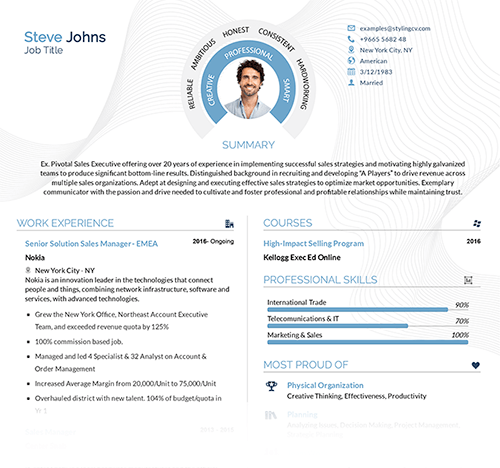
Choosing the best fonts for resumes can make or break your job application. The right font ensures readability, professionalism, and compatibility with applicant tracking systems (ATS). Let’s explore how to pick fonts…
Resume Help - “What fonts are best for resumes?”
Get your free resume now“What fonts are best for resumes?”
Choosing the best fonts for resumes can make or break your job application. The right font ensures readability, professionalism, and compatibility with applicant tracking systems (ATS). Let’s explore how to pick fonts that make your resume stand out while keeping it clean and modern. Fonts like Arial, Calibri, and Helvetica are popular for resumes because…
Sarah Reynolds
Content Specialist

Choosing the best fonts for resumes can make or break your job application. The right font ensures readability, professionalism, and compatibility with applicant tracking systems (ATS). Let’s explore how to pick fonts that make your resume stand out while keeping it clean and modern.
Fonts like Arial, Calibri, and Helvetica are popular for resumes because they’re easy to read and look polished. But the best font for your resume also depends on your industry and personal style. Whether you’re in finance, tech, or design, the right choice balances personality with practicality.
Key Features of the Best Resume Fonts
When selecting fonts for resumes, focus on these four factors:
- Readability: Avoid overly decorative styles. Stick to clean, clear fonts.
- ATS-Friendly: Simple fonts ensure scanning software reads your resume correctly.
- Professional Tone: Fonts like Garamond or Georgia work for traditional fields.
- Consistency: Use one font for headers and another for body text, but don’t mix more than two.
Top Resume Templates with Ideal Fonts
Pairing the best fonts with a strong template boosts your resume’s impact. Check out these options:
- Modern Pro: Uses Helvetica for a sleek, tech-ready look.
- Classic Elegance: Features Times New Roman for traditional industries.
- Creative Bold: Combines Lato and Roboto for design-forward roles.
Customization Tips for Resume Fonts
Even the best fonts need tweaking. Follow these tips:
- Keep font sizes between 10-12pt for body text and 14-16pt for headers.
- Use bold or italics sparingly to highlight key sections.
- Test your resume on screens and paper to ensure readability.
FAQs About the Best Fonts for Resumes
What’s the safest font for a resume?
Calibri and Arial are safe bets—they’re clean and work well with ATS.
Can I use serif fonts for resumes?
Yes! Serif fonts like Georgia add a classic touch, ideal for law or academia.
Should I use two different fonts on my resume?
Stick to one or two at most. Pair a sans-serif header with a serif body for contrast.
Are fancy fonts ever okay?
Avoid them unless you’re in a creative field. Even then, keep them minimal.
How do I check if my font is ATS-friendly?
Stick to common system fonts like Cambria or Verdana and avoid stylized choices.
Final Thoughts on Choosing the Best Fonts for Resumes
A well-designed resume with the right fonts can set you apart in a crowded job market. The best fonts for resumes blend professionalism with personality while ensuring clarity. Ready to upgrade your resume? Explore professional templates tailored to your industry and style. Your dream job deserves a resume that’s as sharp as your skills!
Related articles
Tags
Build your resume in 10 minutes
Use professional field-tested resume templates that follow the exact ‘resume rules’ employers look for. Create My Resume
BUILD MY RESUME NOW

